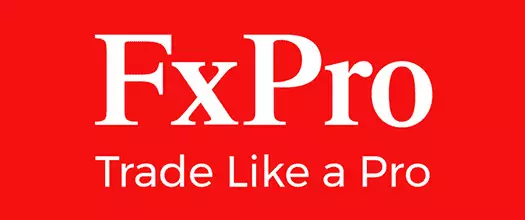Many UK forex traders have started exploring high-leverage trading as a way to potentially increase their returns. While FCA-regulated brokers typically cap retail leverage at 1:30, there is the option to apply for professional trading and unlock significantly higher leverage ratios. Alternatively, numerous offshore brokers offering higher leverage readily accept UK clients.
Although UK traders can potentially maximise their opportunities in the forex market by using high leverage, it is vital they understand both the advantages and disadvantages this type of trading involves. In this publication, we examine high-leverage trading and pinpoint the benefits and risks associated with this trading strategy.
 IG
IG Axi
Axi CMC Markets
CMC Markets Eightcap
Eightcap FxPro
FxPro Plus500
Plus500Below, you can find more information about the best trading platforms with high leverage in the UK:
- IG abides by FCA regulations by capping retail leverage at 1:30 for major and 1:20 for minor forex pairs and gold. Professional traders can access higher leverage ratios of 1:222, with a 0.45% minimum margin requirement.
- Axi caters to retail traders with leverage of up to 1:30 for major currency pairs like EUR/USD and GBP/USD. Customers categorised as professionals will benefit from maximum ratios of 1:500 with Elite Accounts, while a 1:400 limit applies with Standard and Pro Accounts.
- CMC Markets offers retail leverage of 1:30, but professional traders can take advantage of considerably higher ratios reaching 1:500 for major indices and currency pairs. The ratios are lower for other asset classes as follows: 1:400 for treasuries, 1:200 for commodities, 1:33 for shares, 1:20 for share baskets, 1:10 for ETFs, and 1:5 for cryptocurrencies.
- Eightcap complies with FCA restrictions and caps retail leverage at 1:30. Traders seeking higher ratios must apply for professional accounts, where the leverage is higher at 1:200 for forex, gold, and major indices. As for non-major indices and commodities, the limit stands at 1:100. Shares, meanwhile, have a leverage cap of 1:5.
- FxPro offers retail leverage of up to 1:30, but customers can use higher ratios provided they meet the requirements for registering professional accounts. Professional traders may be ineligible for compensation under the UK Financial Services Compensation Scheme (FSCS).
- Plus500 enables forex trading with maximum leverage of 1:30 for retail traders and 1:300 for major pairs and indices with professional accounts. Pro commodity traders can use leverage of up to 1:150. The other ratios include: 1:100 for ETFs, 1:5 for options, and 1:20 for shares and crypto.
Leverage and Margin
Leverage and margin are fundamental concepts that allow traders to amplify their market exposure with a relatively small amount of capital. Leverage acts as a loan provided by the broker, enabling traders to control larger positions than their initial investment would typically allow.
For example, with a leverage ratio of 1:100, a trader can control 100,000 units with 1,000 of their own funds. This magnification of trading power can significantly enhance potential profits.
Margin, on the other hand, is the collateral required to open and maintain a leveraged position. It represents the portion of the trader’s own funds that must be set aside to cover potential losses, and it correlates with the leverage ratio.
If a broker requires a 1% margin, this equates to a 1:100 leverage ratio. The margin acts as a safety net for the broker, ensuring there are sufficient funds to cover the losses if the market moves against the position.
A ratio of 1:1, for instance, means that the trader is not using leverage and that they are trading solely with their own capital. A leverage of 1:2 (50%) can be seen as low, while a leverage of 1:500 is considered exceptionally high.
Plenty of traders stick to leverage of 1:30 or lower as they consider it a good middle ground suitable for novices and veterans alike. Understanding the interplay between leverage, margin, and leverage ratios is crucial for navigating the risks and rewards of trading effectively.
Leverage Limits in the UK
In the UK, retail traders are restricted to maximum leverage of 1:30 for major currency pairs and 1:20 for minor currency pairs. These caps are imposed by the Financial Conduct Authority (FCA) in alignment with the UK’s version of MiFID regulations.
The primary FCA’s goal is to mitigate the risks associated with high leverage, which can amplify both gains and losses. Retail traders, often less experienced, are more vulnerable to significant financial losses, and the limits aim to prevent excessive risk-taking that could lead to devastating outcomes.
In contrast, professional traders in the UK are not subject to the same leverage restrictions and can access higher leverage ratios of up to 1:500. This limit is based on the assumption that professionals possess greater expertise, financial resources, and risk management skills. However, to qualify as a professional trader, individuals must meet two of three specific criteria:
- Sufficient trading experience demonstrated by 10 significant transactions per quarter over the past four quarters
- A substantial portfolio of €500,000+ (around £434,000)
- Professional experience in the financial sphere (at least 1 year)
The rationale behind these leverage limits is rooted in investor protection and market integrity. Overall, the UK’s approach to leverage limits is in line with broader European legislation and reflects a balance between safeguarding retail investors and fostering a dynamic trading environment for experienced market participants.
Of course, some retail traders find the above limits to be far too restrictive. If you are not a professional trader but believe you have the necessary experience and skills to trade with high leverage, the next section will be of interest.
Offshore Brokers Suitable for UK Traders
There is a wide variety of offshore forex brokers that offer retail British traders significantly higher leverage compared to brokers that are licensed by the FCA. Thus, they tend to attract UK traders seeking greater market exposure.
Certain brokerages may provide forex leverage ratios as high as 1:500, and there are even brokers that allow clients to use leverage of up to 1:2000. These caps are considerably higher than the 1:30 limit that is mandated by the UK regulators.
It must be stressed, however, that it is vital to choose brokers regulated by reputable authorities. Unregulated brokers may engage in fraudulent activities, such as manipulating trading platforms, refusing withdrawals, or misusing client funds.
Brokers authorised by recognised bodies like the Vanuatu Financial Services Commission (VFSC) or the Financial Services Authority of Seychelles (FSA) still adhere to regulatory standards, offering a degree of protection to traders as opposed to unlicensed brokers.
However, we still advise caution if one decides to take this route. Exceptionally high leverage has both advantages and significant potential drawbacks, even if one uses an authorised brokerage.
The Advantages and Drawbacks of Trading with High Leverage in the UK
High leverage in trading offers both significant opportunities and considerable risks, making it a double-edged sword for UK forex enthusiasts.
The perks of social trading include:
- High leverage allows traders to control larger positions with a relatively small capital. This means they can maximise returns even from minor market movements.
- It also provides exposure to markets that might otherwise be out of reach for those with limited funds.
- For experienced traders, leverage can be a powerful tool to optimise capital efficiency and execute more sophisticated strategies.
The risks associated with high leverage are equally substantial:
- The most immediate danger is the higher risk of incurring major losses due to exposure to market movements. Small price fluctuations against a trader’s position can result in a significant loss of funds.
- High leverage can make traders more vulnerable to market volatility, particularly during unexpected economic events or sudden shifts in market sentiment.
- The risk of margin calls increases when one uses higher leverage.
Regulatory restrictions in some regions aim to mitigate the aforementioned risks by capping leverage levels, particularly for retail traders. However, while these measures are designed to protect clients, they can also limit potential returns.
Mitigating the Risks of High Leverage Trading
In order to trade with high leverage, traders must carefully weigh the potential rewards against the inherent risks to determine if high leverage aligns with their financial goals and risk tolerance. Mitigating potential losses is also crucial.
One of the most effective ways to lessen risk is by utilising negative balance protection, a feature offered by many brokers. This ensures that traders cannot lose more than their account balance, preventing them from falling into debt.
Stop-loss orders are another essential tool for managing risk. By setting a predetermined exit point for a trade, traders can limit potential losses and avoid emotional decision-making during volatile market conditions. Stop-loss orders should be placed at levels that align with your risk tolerance and trading strategy, ensuring that no single trade can significantly impact your overall portfolio.
Overleveraging in such scenarios can lead to disproportionate losses. Confidence in your analysis and strategy should guide your decision to use high leverage, not the desire for quick profits. Maintaining a disciplined approach to position sizing is vital.
Lastly, continuous education and self-assessment are indispensable. Understanding the mechanics of leverage, margin requirements, and market dynamics can help you make informed decisions. Regularly reviewing your trading performance and adjusting your strategies based on market conditions can further enhance your ability to manage risk effectively.
How to Choose a Good Broker Offering High Leverage
When looking for a reliable broker that offers high leverage, there are various factors you should take into account. By prioritising these factors, you can select a broker that balances high leverage with strong risk management features, ensuring a safer and more efficient trading experience.
- Leverage Caps: Ensure the broker offers leverage levels that align with your risk tolerance and trading strategy.
- Licensing and Regulation: Choose a broker that has earned the seal of approval from regulators like the FSA and VFSC. Licensed brokers adhere to financial standards, ensuring transparency and security for your funds. Avoid unregulated brokers, as they may pose higher risks.
- Market Variety: A good broker should offer access to a wide range of forex pairs like EUR/USD, GBP/JPY, AUD/CAD, and more. If you plan on exploring other markets, look for brokers whose product range includes commodities, indices, and stocks.
- Negative Balance Protection: Opt for brokers that provide negative balance protection, which prevents your account from going into a negative balance due to market volatility. This feature is crucial for managing risk when trading with high leverage.
- Deposit and Withdrawal Methods: Check for brokers that support multiple, secure payment options that are convenient for UK traders. This may include bank transfers, digital wallets like PayPal, and credit/debit cards.
- Execution Speed: High-speed trade execution is essential, especially for high-leverage trading, where delays can lead to significant losses. Brokers with low latency and minimal slippage are ideal.
- Trading Platforms: Ensure the broker offers user-friendly and robust trading platforms (e.g. MetaTrader 4/5, cTrader, TradingView) with advanced tools for risk management, such as stop-loss orders and margin alerts.
- Trading Costs: Look for a broker with narrow spreads, competitive commissions, and low trading costs.
FAQs
Can UK traders access brokers offering 1:500 leverage or higher?
Yes, although for retail clients, it requires venturing into the sphere of international brokers. Locally regulated brokers need to adhere to the FCA’s 1:30 leverage cap. Professional traders, however, may qualify for higher leverage depending on their trading experience, employment history, and capital.
Can I change my trader status from retail to professional in the UK?
Yes, but you must meet specific criteria set by your broker, such as having a portfolio exceeding €500,000 (roughly £434,000), professional experience in the financial sector, or significant trading activity. Keep in mind that professional traders lose certain safeguards, with negative balance protection being a major example.
What is negative balance protection?
Negative balance protection ensures that traders cannot lose more than their deposited funds. This safeguard is mandatory under FCA regulations and protects retail traders from owing money to their brokers in case of extreme market volatility. Plenty of offshore brokers offer negative balance protection as well.
Can I use high leverage for all currency pairs?
This depends on your broker and the authority that regulates it. In the UK and many other European regions, the maximum retail leverage for majors is 1:30, while minors’ leverage cap is lower at 1:20. Offshore brokers, however, may offer the same high leverage regardless of the pair. As for professionals, UK brokers typically set one leverage cap ranging from 1:200 to 1:500 on all currency pairs.
Can I practice trading with high leverage on a demo account?
Yes, many brokers offer demo accounts that let you practice trading with high leverage without risking real money. Some allow you to adjust the leverage, while others keep it at a fixed ratio.